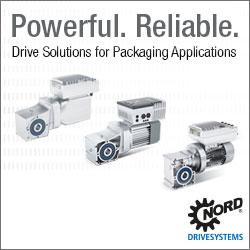Still the Fastest? The ADQ7DC Digitizer Turns 8 Years Old
Eight years after its launch in January 2017, the ADQ7DC digitizer from Teledyne SP Devices continues to set the benchmark for high-performance data acquisition.
Eight years after its launch in January 2017, the ADQ7DC digitizer from Teledyne SP Devices continues to set the benchmark for high-performance data acquisition.
Is it still the world's fastest 14-bit digitizer? Quite possibly. Its longevity is a testament to robust engineering, long-term reliability, and continued relevance in demanding applications.
Proven Performance and Enduring Value
The ADQ7DC may have been the world's first 14-bit digitizer to achieve a 10 giga sample per second (GSPS) sampling rate. Its DC-coupled front-end is optimized for pulsed data and zero-IF RF applications, making it ideal for scientific instruments, particle physics, radar, LiDAR, and mass spectrometry. With 3 GHz analog bandwidth, 4 Gbyte onboard memory, and peer-to-peer GPU streaming at 7 Gbyte/s, it supports deep data capture and real-time processing without compromise.
Flexible Integration with Multiple Interface Types
Available in PCIe, PXIe, USB 3.0, MTCA.4, and 10 GbE formats, the ADQ7DC adapts to a wide range of system architectures. Its open FPGA enables real-time application-specific signal processing, allowing developers to implement custom algorithms directly on the digitizer. This flexibility supports compact, high-performance system design across lab, field, and OEM environments.
Firmware Options for Specialized Applications
The ADQ7DC supports multiple firmware packages tailored to different use cases:
• FWPD (Pulse Detection): Enables advanced real-time pulse detection and analysis directly on the onboard FPGA. It significantly reduces data volume by extracting and transferring pulse attributes instead of raw data, with dynamic record lengths and individually configurable trigger levels per input channel.
• FWATD (Advanced Time Domain): Equips ADQ7DC with advanced tools for time-domain measurements, offering multiple layers of noise suppression to achieve extreme dynamic range and detect weak signals. It also includes temperature-dependent baseline correction and flexible, user-defined settings for real-time digital signal processing performed directly in the onboard FPGA.
• FWDAQ: Default pre-installed firmware that enables advanced data acquisition features, including real-time averaging and waveform accumulation, for improved measurement accuracy and efficiency.
• DEVDAQ: Provides access to the onboard AMD FPGA, enabling users to implement custom real-time signal processing and data reduction directly on the hardware. This allows users to create application-specific algorithms and optimize data handling for their needs.
OEM Integration and Customization
Teledyne SP Devices offers ISO-certified production, global support, and tailored engineering services for OEM customers. The ADQ7DC is designed for seamless integration into commercial systems, with options for hardware and firmware customization to meet specific application needs.
Conclusion
Eight years on, the ADQ7DC continues to deliver unmatched speed, precision, and adaptability. Whether in scientific instrumentation, radar systems, or automated test equipment, it remains a trusted solution for demanding applications. Its combination of high resolution, fast sampling, and flexible integration ensures it will stay relevant for years to come.
Featured Product

NORD Delivers Powerful, Reliable Drive Solutions for Demanding Packaging Applications
When you need quality, flexibility and high efficiency, NORD has you covered with complete drive solutions for primary and secondary packaging, end-of-line packaging, and higher-level applications. NORD supports you through the entire life cycle of your drive systems with pre-sales engineering support, online tools, and a global service network. Drive systems for both vertically and horizontally networked technology with all the options for sensor incorporation and integration into the higher-level control system.
